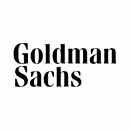
Goldman Sachs
New York, U.S.Founding:
Year: Goldman Sachs was founded in 1869 by Marcus Goldman, a Bavarian immigrant, as a small commercial paper business in New York City.
Milestones:
Early Expansion: The firm expanded its services, moving from commercial paper into other financial areas, including investment banking.
1906: Goldman Sachs became a partnership and expanded its operations internationally.
Initial Public Offering (IPO): In 1999, the company went public with its IPO, marking a significant transition in its history.
Post-2008 Financial Crisis: Goldman Sachs faced considerable scrutiny due to its role in the financial crisis, which altered its operations and perception.
Evolution:
Diversification: Initially focusing on commercial paper, the firm expanded into investment banking, asset management, securities, and other financial services.
Technological Integration: Embracing technology, Goldman Sachs ventured into digital banking and fintech, launching products like Marcus by Goldman Sachs, an online consumer bank.
Cultural Context:
Wall Street Culture: Goldman Sachs has been synonymous with the elite culture of Wall Street, known for its high-stakes financial dealings and prestigious clientele.
Corporate Culture: The company has cultivated a reputation for hiring top talent and fostering a competitive and rigorous work environment.
Positioning & Brand Values:
Tradition and Innovation: Balancing a legacy of financial expertise with a forward-thinking approach.
Integrity and Trust: Upholding principles of integrity and trust in financial dealings.
Client-Centric Approach: Focusing on client needs and building long-term relationships.
Product Design:
Innovative Financial Products: Creation of diverse financial products catering to institutional and retail clients.
Digital Offerings: Embracing digital banking with products like Marcus, offering online savings accounts and personal loans.
Visual Evolution:
Logo and Branding: The Goldman Sachs logo has remained relatively consistent, symbolizing stability and tradition in the financial world.
Successes and Challenges:
Success: Long-standing reputation as a leading investment bank with a global presence.
Challenges: Facing regulatory scrutiny and public criticism post-financial crisis, impacting its public image.
Controversies:
Financial Crisis Involvement: Criticism for its role in the mortgage crisis and subsequent government bailouts.
Conflict of Interest Allegations: Accusations of conflicts of interest between its advisory and trading divisions.
Product Range:
Investment Banking: Mergers and acquisitions, underwriting services.
Asset Management: Wealth management, private banking, and fund management.
Digital Banking: Consumer banking services through Marcus by Goldman Sachs.
Major consumer markets by geography:
North America: Primary market, especially in the United States.
Europe and Asia: Significant presence and operations in these regions.
Competitors in Different Segments:
Investment Banking: Competes with firms like JPMorgan Chase, Morgan Stanley, and Bank of America Merrill Lynch.
Asset Management: Competes with BlackRock, Vanguard, and other asset management firms.
Revenue Streams & Financials:
Diverse Revenue Streams: Income from investment banking, asset management fees, trading operations, and interest income from banking services.
Financial Performance: Historically strong financial performance, though subject to market fluctuations.
- Other Brands
- Apple
- Microsoft
- Amazon
- Google
- Samsung
- Toyota
- Mercedes-Benz
- Coca-Cola
- Nike
- BMW
- McDonald’s
- Tesla
- Disney
- Louis Vuitton
- Cisco
- Instagram
- Adobe
- IBM
- Oracle
- SAP
- Facebook
- Chanel
- Hermes Paris
- Intel
- YouTube
- JP Morgan
- Honda
- American Express
- Ikea
- Accenture
- Allianz
- Hyundai
- UPS
- Gucci
- Pepsi
- Sony
- Visa
- Salesforce
- Netflix
- PayPal
- Mastercard
- Adidas
- ZARA
- AXA
- Audi
- airbnb
- Porsche
- Starbucks
- GE
- Volkswagen
- Ford
- Nescafe
- Siemens
- Goldman Sachs
- Pampers